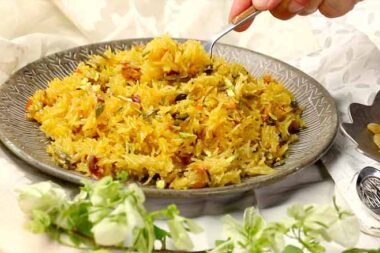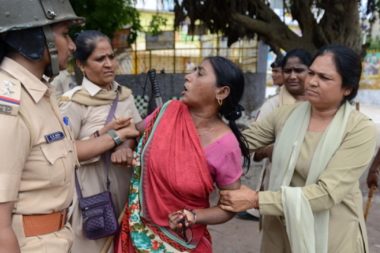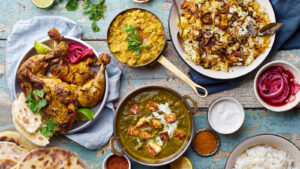
Exploring Pakistan’s Rich Culinary Tapestry: From Biryani to Halwa Puri
Pakistan, a nation renowned for its vast population and diverse landscapes, remains a hidden gem for many food enthusiasts. Beneath the surface lies a treasure trove of picturesque scenery, a deep cultural legacy, and a linguistic diversity that shapes the country’s extensive food culture. While often overshadowed by its neighboring culinary giant, India, Pakistani cuisine boasts its own array of hearty, aromatic, and spicy dishes. The roots of this culinary tradition are intertwined with history, culture, and religion, resulting in a gastronomic experience that reflects the nation’s intricate tapestry.
Historical Background and Influences 
Pakistani cuisine shares distinct similarities with its Indian counterpart due to their shared history under the British Raj until 1947. This connection has forged a culinary kinship that is reflected in the heartiness, spiciness, and aromatic nature of both cuisines. The influence of the Mughal Empire, which spanned centuries, introduced flavors from Turkey, Uzbekistan, and Iran to the Pakistani shores, further enriching the country’s culinary heritage. The passage of time has seen some recipes remain true to their historical roots, while others have evolved with the changing times.
Religion and Diet
Religion plays a pivotal role in shaping the Pakistani diet. With approximately 95% of the population adhering to Islam, the consumption of pork and alcohol is prohibited. This religious adherence greatly impacts the cuisine, resulting in meat taking center stage in most dishes. Lamb, goat, beef, and chicken are commonly used, along with pulses, reflecting a protein-rich diet. Festivals like Ramadan also significantly influence eating habits, with fasting observed during the day and feasting at night.
Prominent Pakistani Dishes 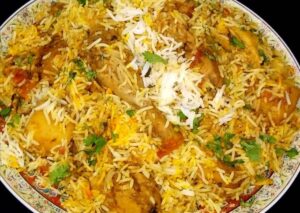
- Sindhi Biryani: A regal dish featuring fluffy basmati rice layered with marinated meats, tangy tomato gravy, saffron milk, mint, green chilis, and dried plums. A spicier variant, Sindhi biryani showcases pungent flavors with hints of sourness.
- Fruit Chaat: A refreshing blend of local fruits like guava, mango, and pomegranate, enhanced by tangy chaat masala and a touch of sugar. This popular dish finds its place in Ramadan iftar feasts and street food stalls.
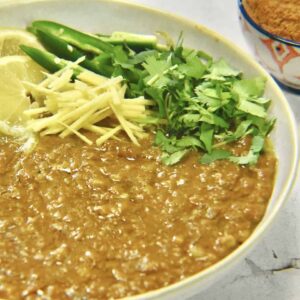 Haleem: A hearty dish made by slow-cooking wheat, meat, and lentils with ghee, spices, and nuts. Garnished with ginger, caramelized onions, and cilantro, haleem’s rich flavors carry a historical legacy.
Haleem: A hearty dish made by slow-cooking wheat, meat, and lentils with ghee, spices, and nuts. Garnished with ginger, caramelized onions, and cilantro, haleem’s rich flavors carry a historical legacy.- Chapli Kebab: A succulent minced beef kebab infused with tomatoes, pomegranate seeds, chilis, and spices. Best enjoyed with naan and a crisp salad.
- Peshwari Naan: A beloved variety of naan stuffed with sweet fillings like nuts, coconut, and dried fruits. Peshwari naan is a breakfast delight.
- Nihari: A rich meat curry slow-cooked with whole spices and ghee, often enjoyed with naan.
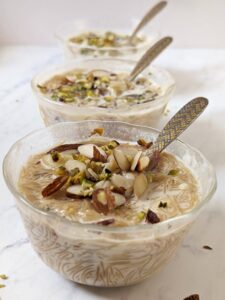
- Sheer Khurma: A floral and creamy dessert pudding infused with rose water, nuts, and spices. A staple during festive occasions.
- Sajji: A Balochistani delicacy featuring skewered and barbecued lamb rubbed with salt.
- Chana Chaat: A tangy chickpea salad embellished with spices, chutneys, and yogurt.
- Halwa Puri: A popular breakfast comprising ghee-laden semolina pudding (halwa) and crispy puri bread.
Conclusion
Pakistani cuisine, while often overshadowed, emerges as a vibrant fusion of history, culture, and religion. From biryani to halwa puri, the dishes narrate a tale of flavor, tradition, and community. The culinary journey through Pakistan’s aromatic kitchens and vibrant street stalls offers a glimpse into the nation’s rich tapestry, awaiting discovery by food enthusiasts around the globe.



